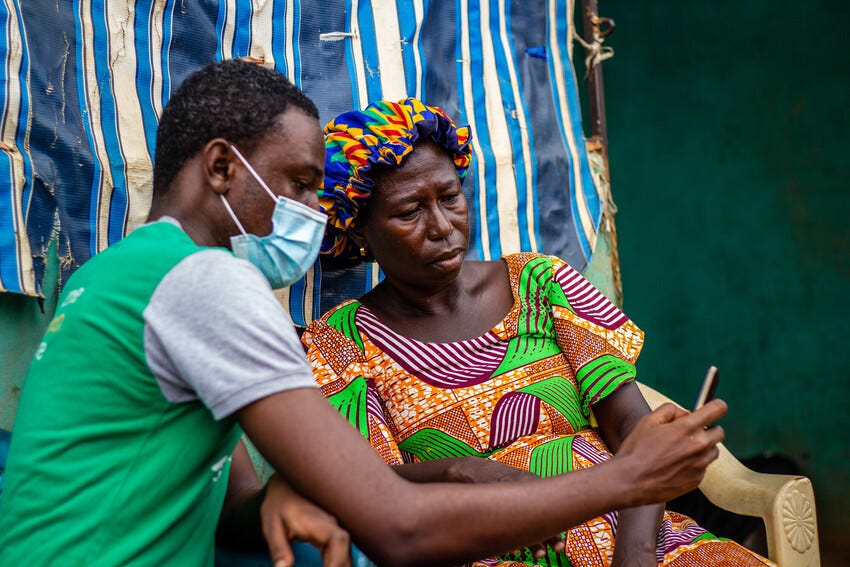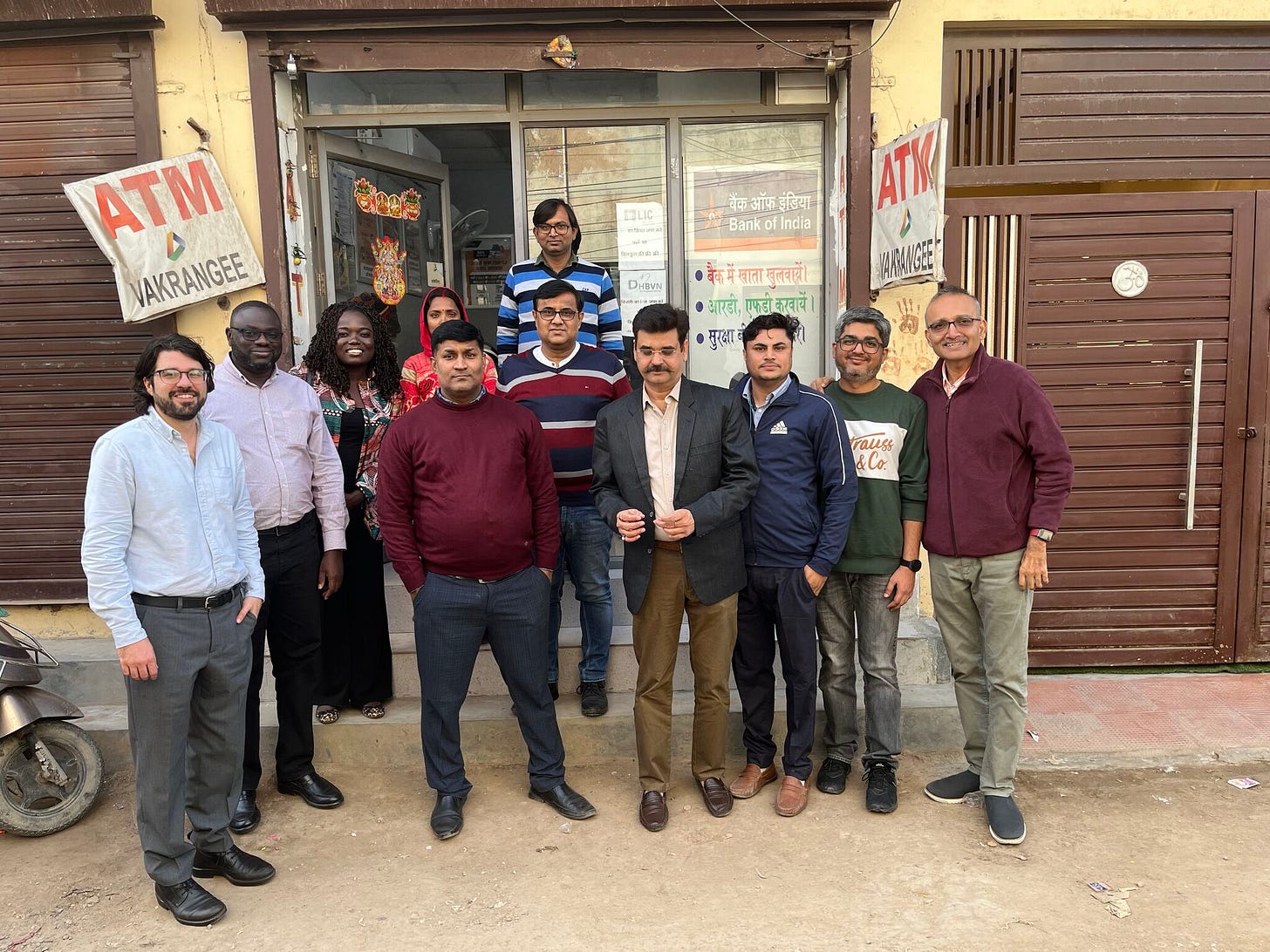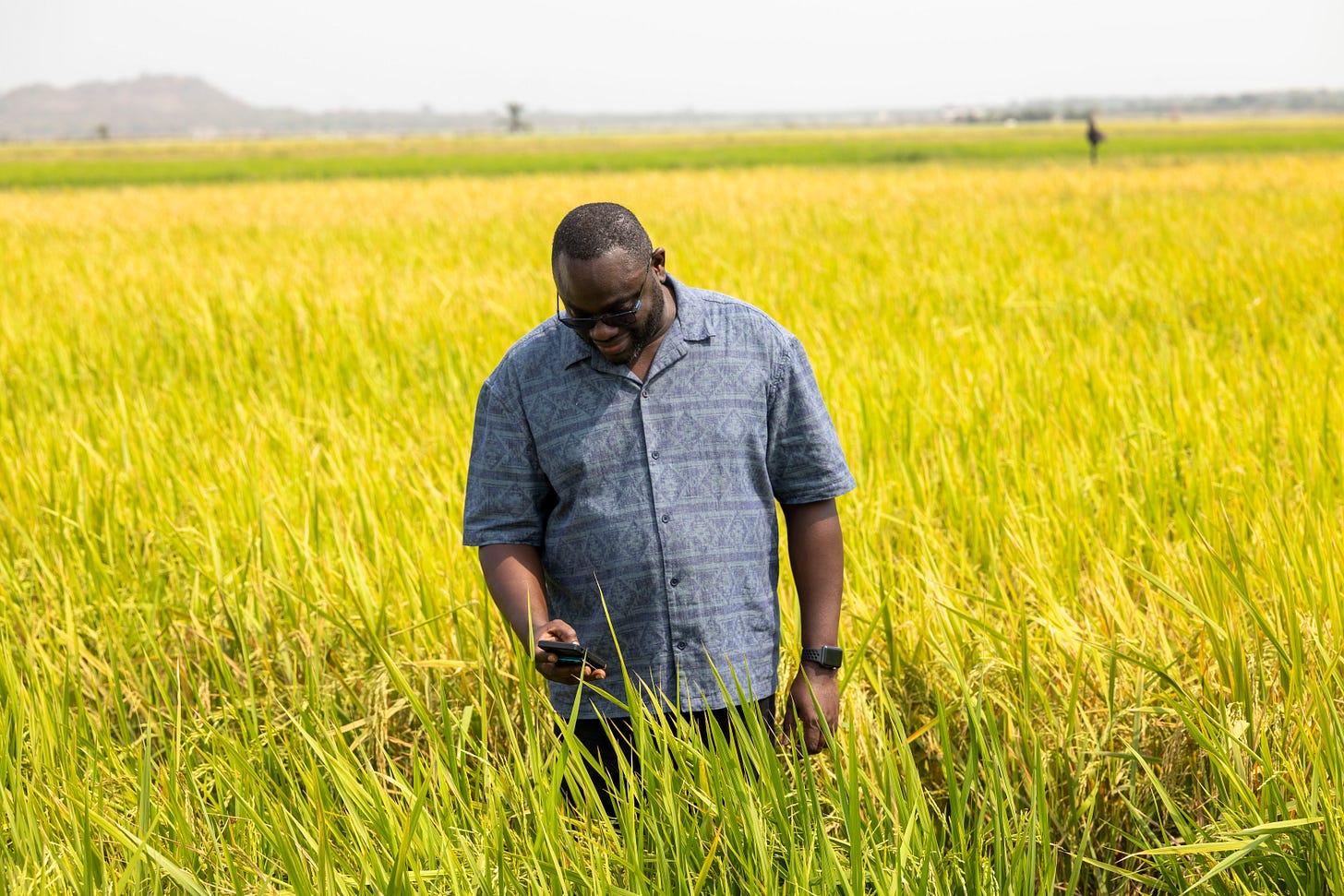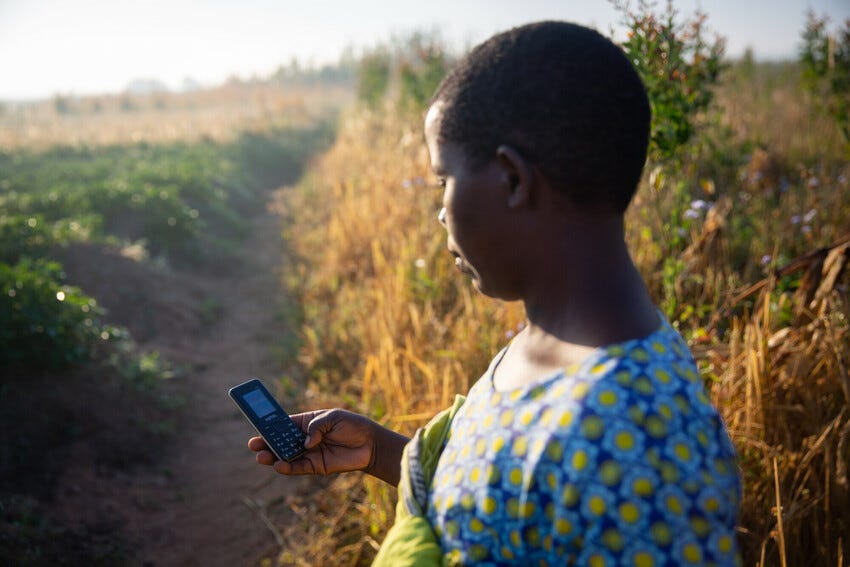5 Powerful Lessons from Building AI Solutions for African Agriculture
One Voice, One Farmer at a Time
What if a farmer in Malawi could get crop advice as easily as sending a WhatsApp message? What if the most complex parts of agricultural knowledge, such as when to plant, how to manage disease, or what to expect from the weather were available instantly, in the local language, on demand?
This isn’t some tech utopia. It’s already happening.
In my latest episode of the Unlocking Africa podcast, I had the pleasure of speaking with Dr William Derban, Head of Programs and Partnerships at Opportunity International’s Digital Innovations Group. With a 25-year career spanning banks, telcos, and NGOs, William is laser-focused on using technology to serve the underserved, especially Africa’s smallholder farmers.
We discussed how AI is being used to bridge knowledge gaps in agriculture, why human-centred design still matters, and what it takes to deploy these innovations in places where smartphones are sold during times of financial difficulty.
Let’s break it down.
5 Key Takeaways You Can Apply Today
1. Always Start With the End User
Before building any tech, Dr Derban’s team creates detailed personas like "Faustina", a smallholder farmer archetype, to ensure solutions match real-world needs.
“If you say SME or smallholder farmer, what does that even mean? There’s a whole range there. Personas help us design for specific realities.”
Try This: When developing a product or service, create a fictional profile of your ideal user. What do they care about? What challenges do they face day-to-day?
2. Use AI to Increase Trust, Not Replace It
Opportunity International built UlangiziAI, which is an AI chatbot powered by WhatsApp that offers reliable farming advice based on Malawi’s official agricultural guide.
“The bot gives answers only from the official Good Agricultural Guide, so you can trust it. Even better, it tells you the exact page the info came from.”
Try This: If you’re deploying AI, consider using retrieval-augmented generation (RAG) models that ground answers in trusted data, minimising the risk of misinformation.
3. Think Low-Tech to Go High-Impact
Instead of pushing web-based platforms, UlangiziAI was embedded in WhatsApp because that’s what extension officers and support agents already use.
“They could speak into the app in Chichewa, get an instant answer back, and show it to farmers. That’s real-time, in-language support.”
Try This: Ask yourself, what’s the lowest common tech denominator your audience are using, and can your solution meet them there?
4. Build for Inclusion, Not Just Innovation
With smartphone affordability still a challenge, human-in-the-loop strategies ensure those without devices aren’t left behind.
“During lean seasons, farmers might sell their phones. But if a support agent has the app, the farmer still gets access to the information.”
Try This: Consider intermediaries like field agents, teachers, or community leaders who can help extend your solution’s reach to harder-to-access populations.
5. Partnerships Make or Break Scale
From Safaricom’s DigiFarm in Kenya to the Development Bank of Ghana, strategic partnerships are essential for regional scaling.
“Governments, telcos, agritechs, we all need to collaborate. The challenges are too big to work in silos.”
Try This: Identify organisations with aligned missions and complementary infrastructure. Joint pilots, data-sharing agreements, and co-funding models can accelerate impact.
Real-World Impact: How AI Is Helping African Farmers Like Faustina
The conversation wasn’t just about the “what” but also the “how.”
In Malawi, the Opportunity team walked the fields with real farmers asking not what tech they wanted, but what information they lacked. The answer surprised even seasoned professionals like Dr Derban. More than money or tools, farmers craved timely, accurate knowledge.
“A cyclone had destroyed their crops. They didn’t know what or when to plant anymore.”
That insight birthed UlangiziAI. And now, similar AI pilots are rolling out in Kenya (for potato farming) and Ghana (for the rice value chain), each tailored with local government-approved content and regional partnerships.
And it’s not stopping with agriculture. A new project in Ghana will soon help teachers create lesson plans from the national curriculum using AI and bring the same trusted model to education.
Why Human-Centred AI Design Matters in African Agriculture
For all the promise AI holds, Dr Derban stressed one non-negotiable, which is to keep the human at the centre.
“Without understanding the person you’re designing for; you’ll just build nice toys no one uses.”
Their internal "Idea Days" empower staff across Africa to pitch real solutions for real people like Faustina the farmer, Miriam the microentrepreneur, or Moses the headteacher. The top ideas are refined, piloted, and scaled.
And because data privacy matters too, cartoon-style videos explain consent, personal data, and digital safety to first-time users, making sure trust isn’t just built but earned.
The Future of AI in African Agriculture…
Opportunity International is betting big on local capacity.
“Africa has the youngest population in the world. We don’t just need users of AI; we need developers. People solving local problems with local solutions.”
Whether you’re a developer, a policymaker, or just someone passionate about inclusive tech, now’s the time to plug in.
Here’s what you can do - Join the conversation, partner for impact, and upskill your team.
“If we don’t grab this moment, AI will pass us by like oil did. The future is not just about tools—it’s about ownership.”
Listen to the full interview with Bernard Laurendeau on the Unlocking Africa Podcast - just click the button below!









